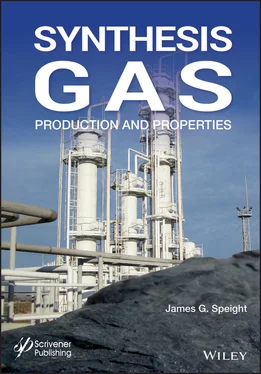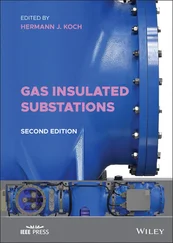The methods designated as volumetric methods represent attempts to determine the amount of oil-in-place by using the size of the reservoir as well as the physical properties of the reservoir rock(s) and the reservoir fluids. In the calculation process, a recovery factor is assumed, using data (and assumptions) from other crude oil and natural gas fields with similar characteristics to the field under evaluation. Based on these assumptions, the estimated amount of crude oil or natural gas in-place is multiplied by the recovery factor (derived from the other (similar) fields to arrive at an estimate of the reserves in-place. Current recovery factors for oil fields around the world typically range between 10 and 60% v/v of the crude oil and natural gas in-place while some recovery factors are in excess of 80% v/v of the crude oil and natural gas in place. The wide variance is due largely to the diversity of fluid and reservoir characteristics for different deposits. The method is most useful early in the life of the reservoir, before significant production has occurred. However, site specificity, which arise because of the differences in reservoir character (for example reservoir mineralogy, porosity, permeability) and the character of the reservoir fluids must also be given serious consideration, otherwise the estimation of the reserves in-place may be in error (by an order of magnitude above or below the real amount in-place. Such is the difficulty of estimating the reserves.
In addition, the materials balance method for a crude oil field or natural gas field uses an equation (or derivation thereof) that relates (in the case of a crude oil reservoir with associated natural gas) the volume of crude oil, water and gas that has been produced from a reservoir, and the change in reservoir pressure, to calculate the remaining crude oil or natural gas. The calculation uses the assumption that as fluids from the reservoir are produced, there will be a change in the reservoir pressure that depends on the remaining volume of oil and gas. The method requires extensive pressure-volume-temperature analysis as well as an accurate pressure history of the field. If the pressure history of the field is not available, the calculation requires some production to occur (or to have occurred) (typically 5% to 10% v/v of ultimate recovery), unless reliable pressure history can be used from a field with similar reservoir rock characteristics as well as the characteristics of the reservoir fluids.
The decline curve method (also known as the production performance method ) uses known production data to fit a decline curve and estimate future oil production – the three most common forms of decline curves are exponential , hyperbolic , and harmonic . The decline curve analysis is a long-established tool for developing future outlook for crude oil and/or natural gas production from an individual well or from an entire oilfield. Depletion has a fundamental role in the extraction of finite resources and is one of the driving mechanisms for oil flows within a reservoir and the depletion rate can be connected to decline curves. Consequently, depletion analysis is a useful tool for analysis and forecasting crude oil and natural gas production.
In the calculation, it is assumed that the production will decline on a reasonably smooth curve, and so allowances must be made for wells shut in and production restrictions. The curve can be expressed mathematically or plotted on a graph to estimate future production. It has the advantage of (implicitly) including all reservoir characteristics. However, the method requires a sufficient well or reservoir history to establish a statistically significant trend, ideally when production is not curtailed by regulatory or other artificial conditions.
Generally, the initial estimates of the size of newly discovered oil fields are usually too low. As crude oil and/or natural gas production continues, successive estimates of the ultimate recovery of fields tend to increase. The term reserve growth refers to the typical increases in estimated ultimate recovery that occur as oil fields are developed and produced. Reserve growth has now become an important part of estimating total potential reserves of an individual province or country. As the worldwide crude oil reserves continue to decline, there is the need for the reserve estimates to be more precise through application of the reserve-growth concept. In fact, the concept could be applied even to the so-called undiscovered resources with some qualifications as to the inherent risk (Speight, 2011a, 2014a).
1.2 Typical Energy Sources
The widespread use of fossil fuels has been one of the most important stimuli of economic growth and has allowed the consumption of energy at a greater rate than it is being replaced and presents an unprecedented risk management problem (Yergin, 1991; Hirsch, 2005; Hirsch et al. , 2005; Yergin, 2011). A peak in the production of crude oil will happen, but whether it will occur slowly or abruptly is not certain – given appropriate warnings, the latter is likely to be the case. The adoption of alternate technologies to supplant the deficit in oil production will require a substantial time period on the order of at least 10 to 20 years.
Global energy consumption is increasing and is expected to rise by 41% over the period to 2035 – compared to a 52% rise over the last 20 years and 30% rise over the last decade. Of the growth in demand, 95% is expected to come from the emerging economies, while energy use in the advanced economies of North America, Europe and Asia as a group is expected to grow only very slowly – and begin to decline in the later years of the forecast period (BP, 2019). The data for reserve estimates indicate that there are sufficient reserves to cover this trend at least to and even beyond 2035. Crude oil and its associate remain the leading fuel and source of chemicals (Speight, 2014a, 2019a).
For many decades, coal has been the primary feedstock for gasification units but due to recent concerns about the use of fossil fuels and the resulting environmental pollutants, irrespective of the various gas cleaning processes and gasification plant environmental cleanup efforts, there is a move to feedstocks other than coal for gasification processes (Speight, 2013a, 2013b, 2014b). But more pertinent to the present text, the gasification process can also use carbonaceous feedstocks which would otherwise have been discarded and unused, such as waste biomass and other similar biodegradable wastes. Various feedstocks such as biomass, crude oil resids, and other carbonaceous wastes can be used to their fullest potential. In fact, the refining industry has seen fit to use crude oil resid gasification as a source of hydrogen for the past several decades (Speight, 2014a).
Gasification processes can accept a variety of feedstocks but the reactor must be selected on the basis of feedstock properties and behavior in the process. The advantage of the gasification process when a carbonaceous feedstock (a feedstock containing carbon) or hydrocarbonaceous feedstock (a feedstock containing carbon and hydrogen) is employed is that the product of focus – synthesis gas – is potentially more useful as an energy source and results in an overall cleaner process. The production of synthesis gas is a more efficient production of an energy source than, say, the direct combustion of the original feedstock because synthesis gas can be (i) combusted at higher temperatures, (ii) used in fuel cells, (iii) used to produce methanol, (iv) used as a source of hydrogen, and (v) particularly because the synthesis gas can be converted via the Fischer-Tropsch process into a range of synthesis liquid fuels suitable for use gasoline engines, for diesel engines, or for wax production.
Читать дальше












